Basic Electrocardiography Interpretation
Unidad de Apoyo para el Aprendizaje
Proyecto PAPIME Clave: PE308817
StartClick on the arrows to view introductory information about electrocardiography and the heart.
In this unit, you will study the electrocardiogram (ECG) as the graphic representation of the electrical activity of the heart and its diagnostic usefulness when the electric activity is altered by a disease. As a result of this alteration, the ECG is modified.
Click on the arrows to view key questions about electrocardiography.
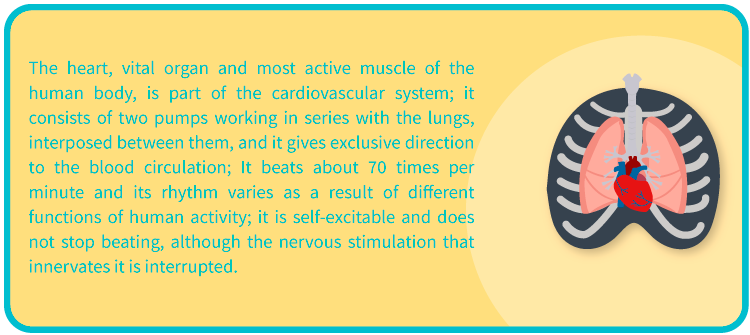
On the external part of the heart, we find the origin of the great veins (superior vena cava and inferior vena cava) that transport blood from the heart to the tissues, and from the tissues to the heart.
Click on each physical feature of the heart, to display its definition.
Click on the image to recognize the external anatomy of the heart.
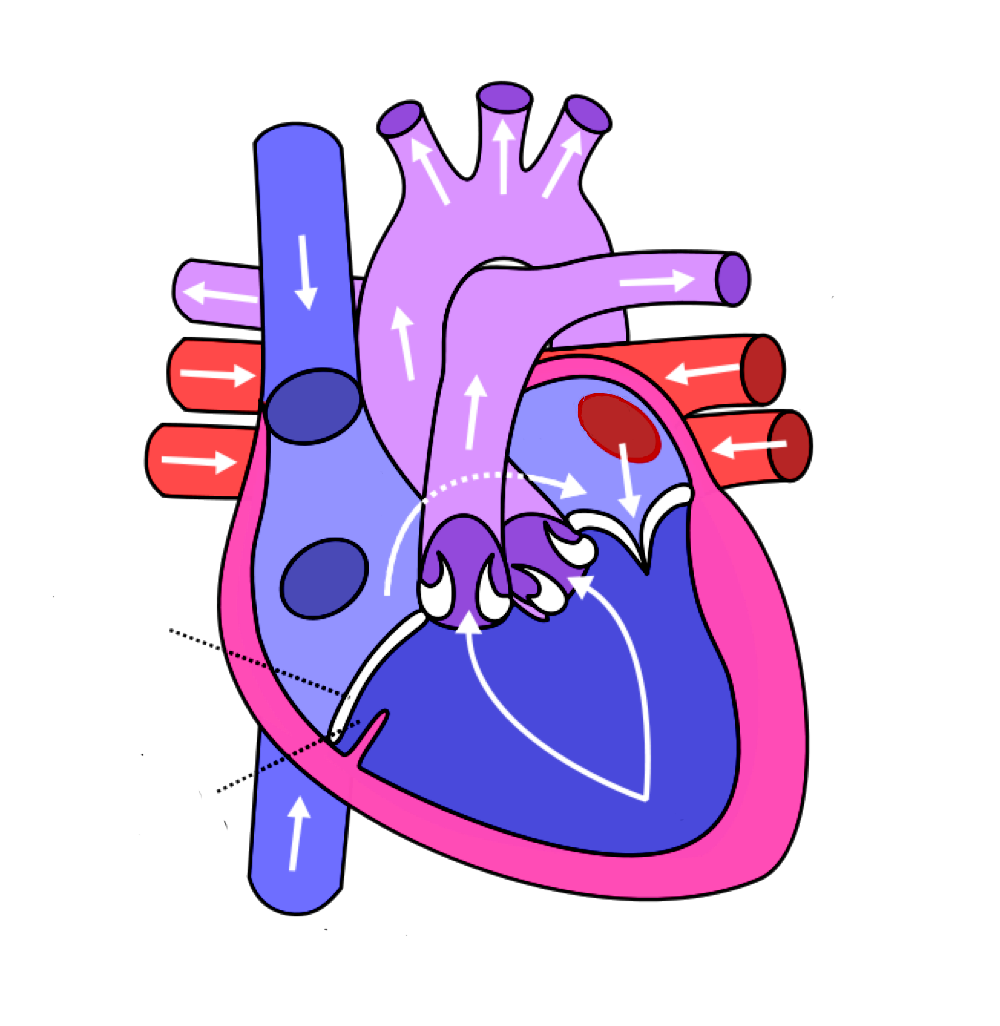
Wikipedia. (n. d.). Atresia tricuspídea [imagen]. Tomada de https://commons.wikimedia.org/wiki/File:Tricuspid_atresia-es.svg
On the inside, the heart is divided in four chambers: two upper chambers known as atria (the left atrium and the right atrium) and two lower chambers called ventricles (the left ventricle and right ventricle). These are connected by valves. In order to describe the heart in its interior, we will go on the usual direction followed by circulation.
Click on the image to identify the internal anatomy of the heart.
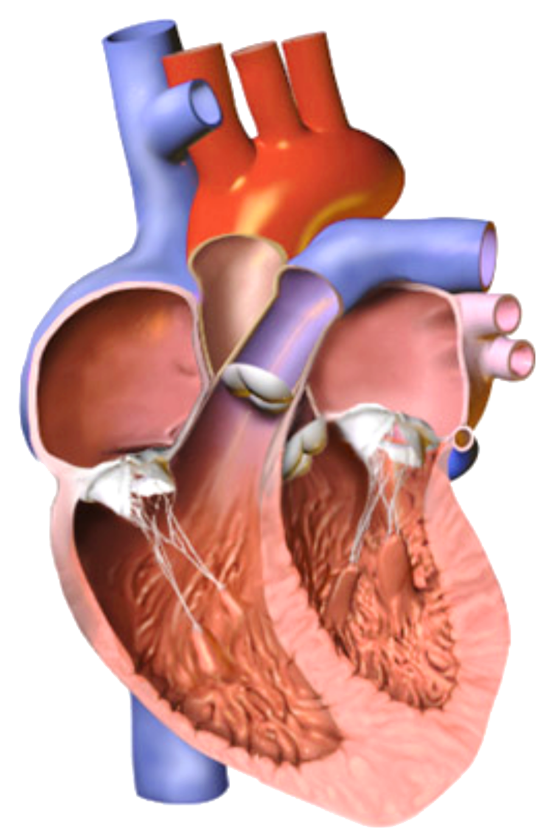
Wikipedia. (n. d.). Cardiac Valves [imagen]. Tomada de https://commons.wikimedia.org/wiki/File:Heart_valves_*_V%C3%A1lvulas_cardiacas.png
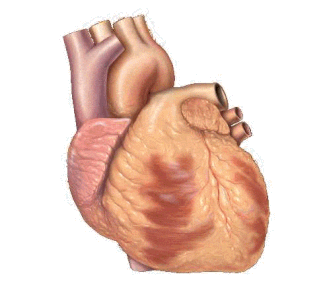
Wikipedia. (n. d.). Basic representation of cardiac conduction [gif]. Tomado de https://commons.wikimedia.org/wiki/File:Basic_representation_of_cardiac_conduction.gif
Click on to check the electrical function of the heart.
Click on each component of the electrocardiogram to review its description.
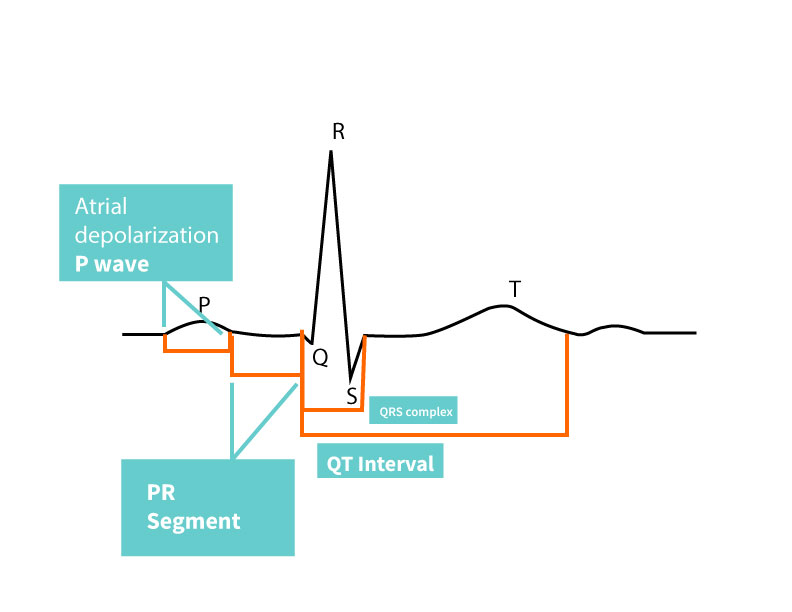
Gallardo, L. B. (2018). ECG [illustration]
Click on each part of the electrocardiogram, to display what each one represents.
Heart rate
It is very important to determine the heart rate of an electrocardiogram (ECG), since it shows the presence of tachycardia or bradycardia and it may bring light on suspicions about certain pathologies. The easiest way to calculate the heart rate, as long as there is a regular rhythm, is to locate an R wave that matches a thick line on the graph paper; after that, we count the number of large boxes to the next R wave; we divide 300 by the number of large boxes; for example, if there is a box between two R waves, the heart rate will be 300; if there are two boxes, 150; three boxes, 100; four boxes, 75, and so on. It is also possible to determine this graphically, as you can see in the following image.
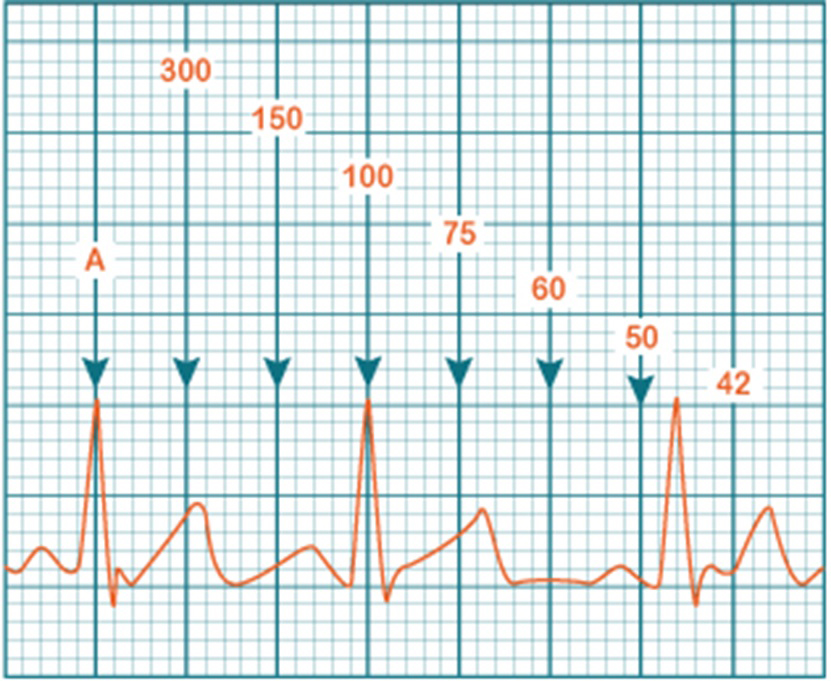
Gallardo, L. B. (2018). FC-ECG [illustration]
Individually, each patient has a graphic image of the activity of their heart and can approach normal or pathological.
Therefore, there is a wide range of normal ECGs that follow a certain stereotype and it is necessary to correctly interpret the normal, from where the pathological can be diagnosed.
Recognize how each of the elements depicted in the millimeter paper of an adult patient's ECG is expressed to put into practice the diagnosis you could face.
It is important to make an interpretation of the ECG through a logical ordering and we suggest you use the following:
If you have in mind the anatomy of the heart and the conduction system which allows its electrical autonomy, this will help you to make a more precise diagnosis of any problem detected during nursing care.
Bearing in mind the anatomy and conduction system that allows the heart, electrical autonomy can favor a diagnosis with more precision regarding some problem identified during nursing care.
Information sources
Bibliography
Castellano, C., Pérez, M. A. y Attie, F. (2004). Electrocardiografía clínica (2.a ed.). Madrid: Elsevier.
Guadalajara, J. F. (2006). Cardiología (6.a ed.). Méndez Editores.
Guyton, A. C. y Hall, J. E. (2011). Tratado de fisiología médica (22.a ed.). Madrid: Elsevier.
Hanzlick, R. y Rydzewski, D. (1990, septiembre). Heart weights of white men 20 to 39 years of age. An analysis of 218 autopsy cases. The American Journal of Forensic Medicine and Pathology, (11), 202-204.
San Mauro, M. (2013). Anatomía cardiaca: una manera integral de estudiar las estructuras del corazón y los grandes vasos. Buenos Aires: Editorial de la Universidad Nacional de La Plata.
Bibliography
Gardner, E., Gray, D. y O'Rahilly, R. (1997). Anatomía. Estudio por regiones del cuerpo humano(2.a ed.). Barcelona: Salvat.
Testut, L. y Latarjet, A. (1967)Tratado de anatomía humana. Barcelona: Salvat.
Williams, R. L., Warwick, R., Dyson, M. y Bannister, L. H. (1995). Gray. Anatomía (37.a ed.). Río de Janeiro: Guanabara-Koogan
How to quote
Gallardo, L. B. (2018). Basic Electrocardiography Interpretation. Unidades de Apoyo para el Aprendizaje. CUAED/ENEO-UNAM. Retrieved on (date) from (link)